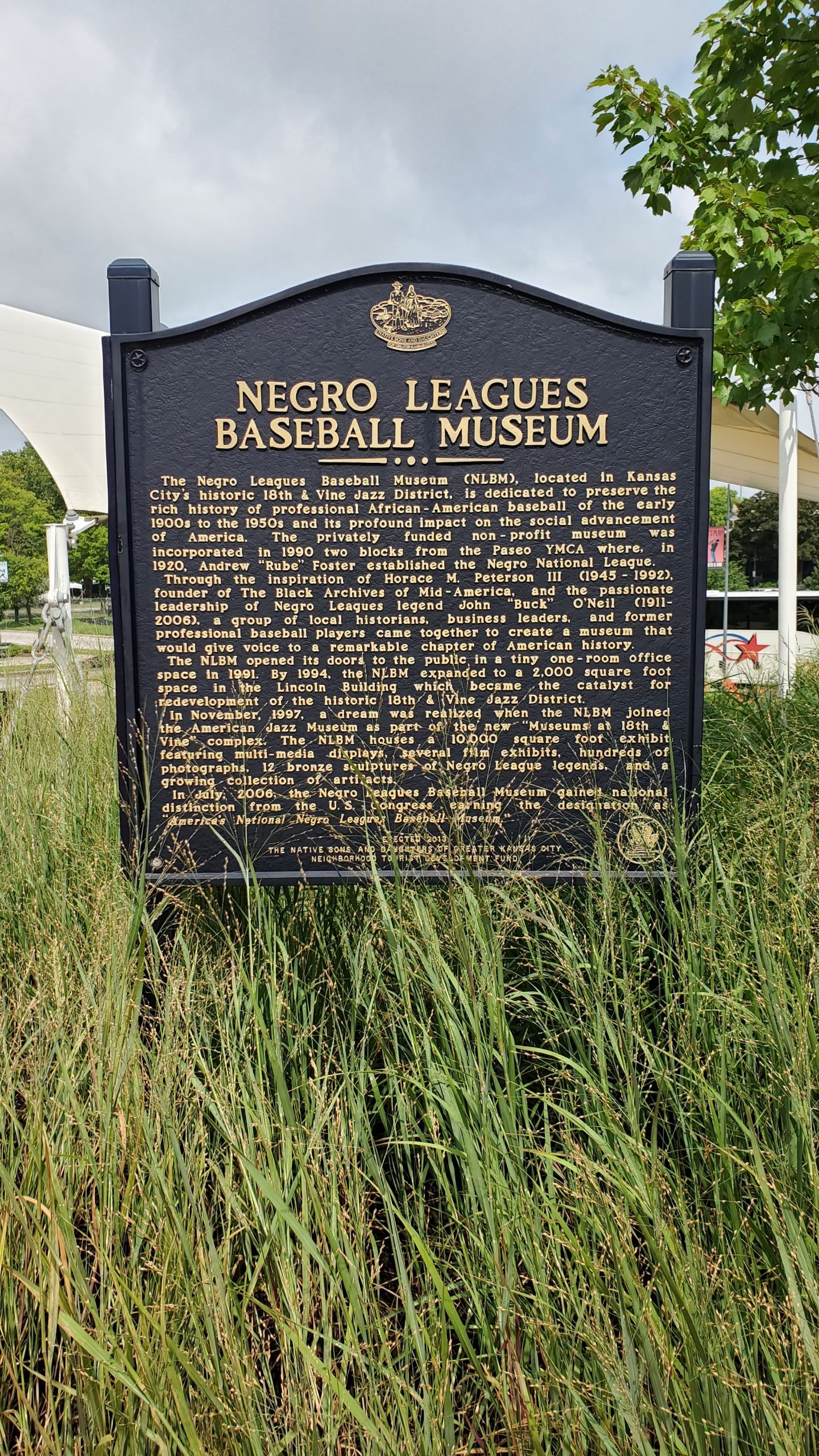Before we left Kansas City, we paid a visit to the Negro Leagues Baseball Museum in Kansas City. The museum shares space with the National Jazz Museum in downtown Kansas City. Fortunately, we were able to arrange for a late check out at Campus RV Park, since parking space isn’t designed for oversized vehicles!
In the Beginning
As a sport, baseball evolved from other ball and bat types of sports that traveled over from England with immigrants. By the 1830s, baseball had become a sport played by amateur clubs, workplaces, colleges, and other groups. During this time, African American and other people of color played alongside White players on the field.
In 1858, amateur clubs adopted uniform rules, governed by the National Association of Base Ball Players. Thirteen years later, in 1861, the first professional league, the National Association of Professional Base Ball Players was founded. Five years after that, the Major League Baseball association was founded, followed by the American League in 1901.
As the game evolved from amateur to professional, racism started pulling the leagues apart. As early as 1860s, some all-White teams refused to play teams with players of color. In the 1880s, Cap Anson and the Chicago White Stockings refused to take the field with Black players, and the issue escalated. In 1887, the International League team in which the Chicago White Stockings played voted to ban future contracts for Black players.
By the 1890s, through explicit votes and “gentlemen’s agreements,”team were fully segregated and remained that way until 1947.
The Birth of the Negro Leagues
As Black players were forced out of the established leagues, they founded their own teams and leagues. By the early 1900s, there were dozens of teams in the East and South. While they were generating crowds, White ticketing organizations kept most of the profits. To help ensure that teams of color kept more of their revenue, Andrew “Rube” Foster successfully organized the Negro National League in 1920. This was the first, successful, organized league structure. As a result, the Negro National League teams generated more financial returns for their Black ownership, and attracted even bigger crowds to their venues.
The Negro National League was the first, but it was soon followed by other Black leagues, including the Eastern Colored League, the American Negro League, the East-West League, and the Negro Southern League. The museum profiled many of the players who made names for themselves in Foster’s new league, including Cool Papa Bell, Satchel Paige, and Turkey Stearnes.
Breaking Color – and Gender – Barriers
The Negro Leagues Baseball Museum also featured the stories of Jackie Robinson and other players who received contracts from the MLB beginning in 1947. The museum also profiles Black women who broke the gender barrier in what remains a very male-dominated game. Effa Manley was the owner of the Newark Eagles. Minnie Forbes owned the Detroit Stars.
Marcenia Lyle (Stone) Alberga played for semi-professional teams in San Francisco and New Orleans before becoming the first woman to play for the Negro Leagues on the Indianapolis Clowns in 1953. She was inducted into the International Women’s Sports Hall of Fame in 1993. Constance Enola Morgan and Mamie “Peanut” Belton Johnson also played for Indianapolis in the 1950s.
Our Impressions of the Negro Leagues Baseball Museum
If you are ever in Kansas City, the Negro Leagues Baseball Museum should be on your list of to dos. The museum’s interactive, multi-media approach effectively tells the story of the significant influence of players of color on baseball. It provides an inspiring story of persistence, passion, and athleticism. More importantly, it illustrates the negative impact of excluding an entire population of people from the business of baseball.
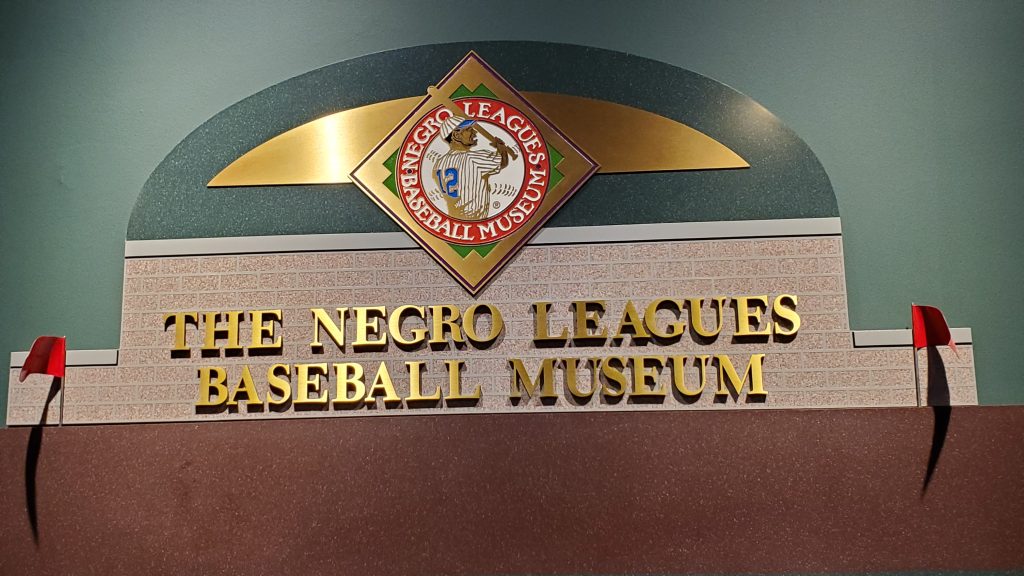
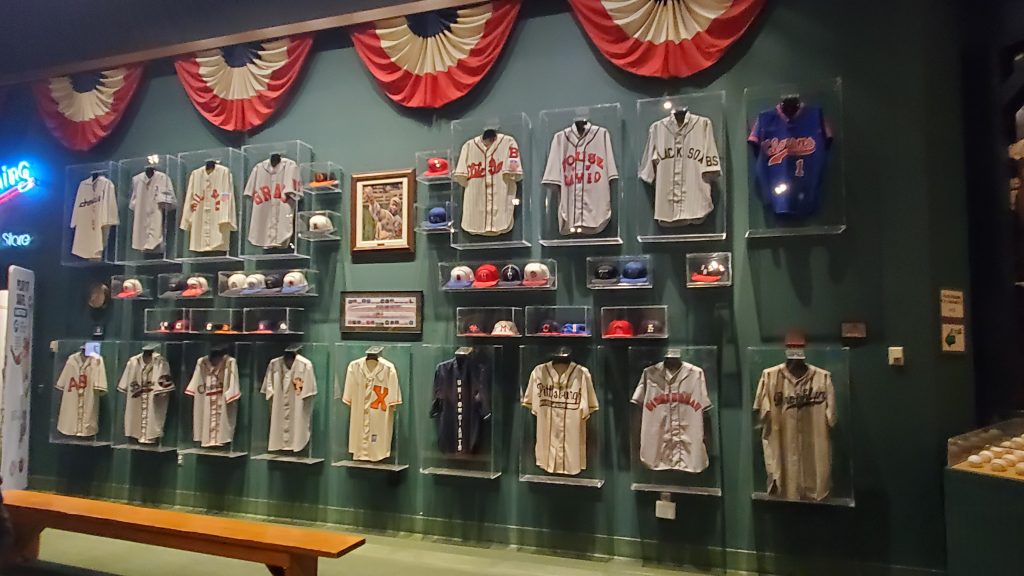

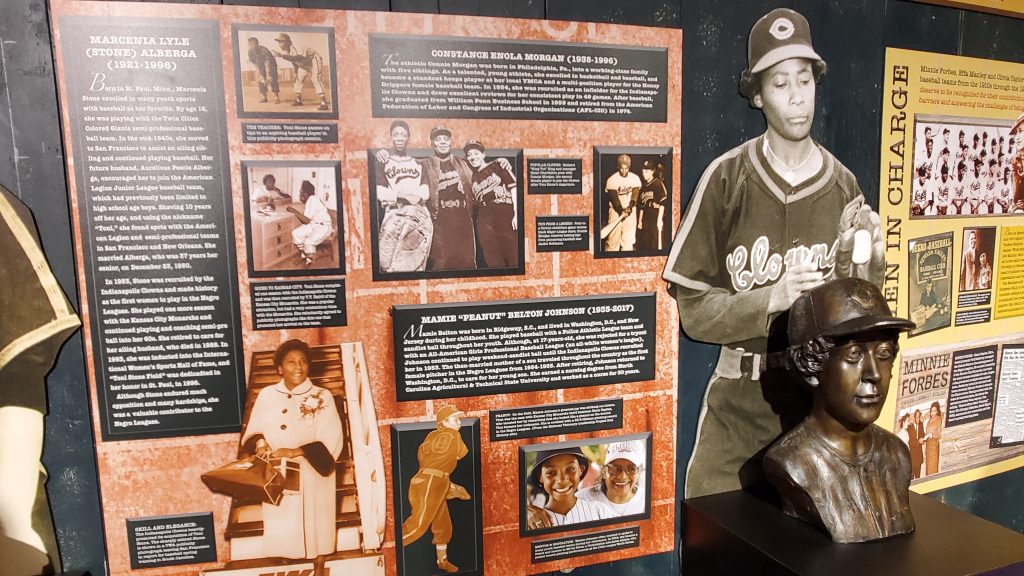
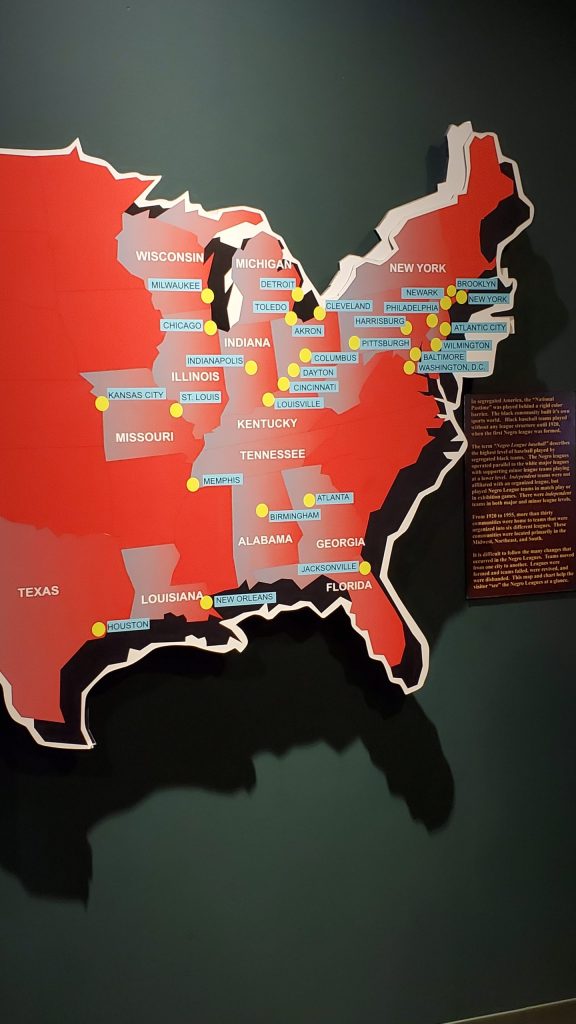

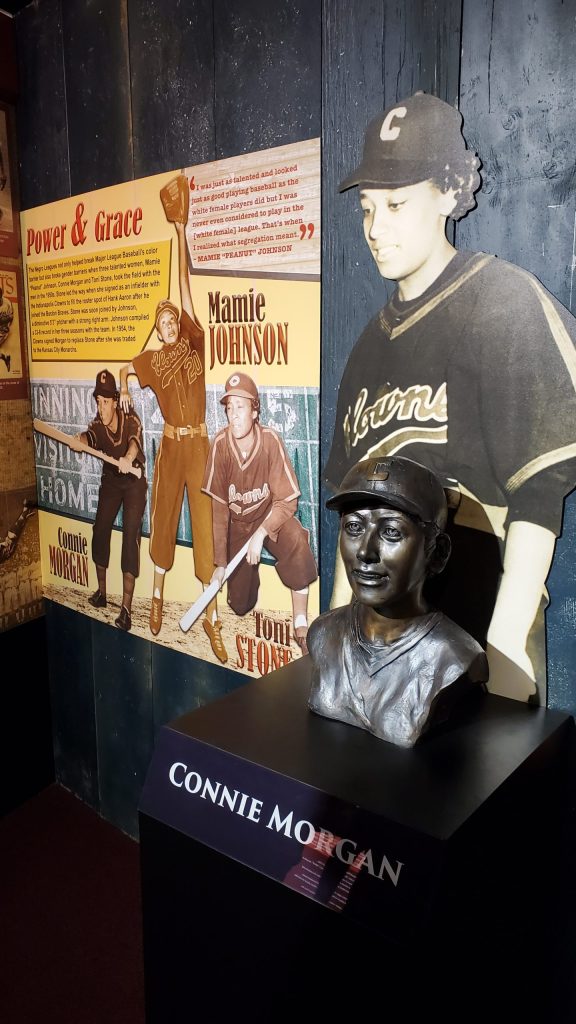
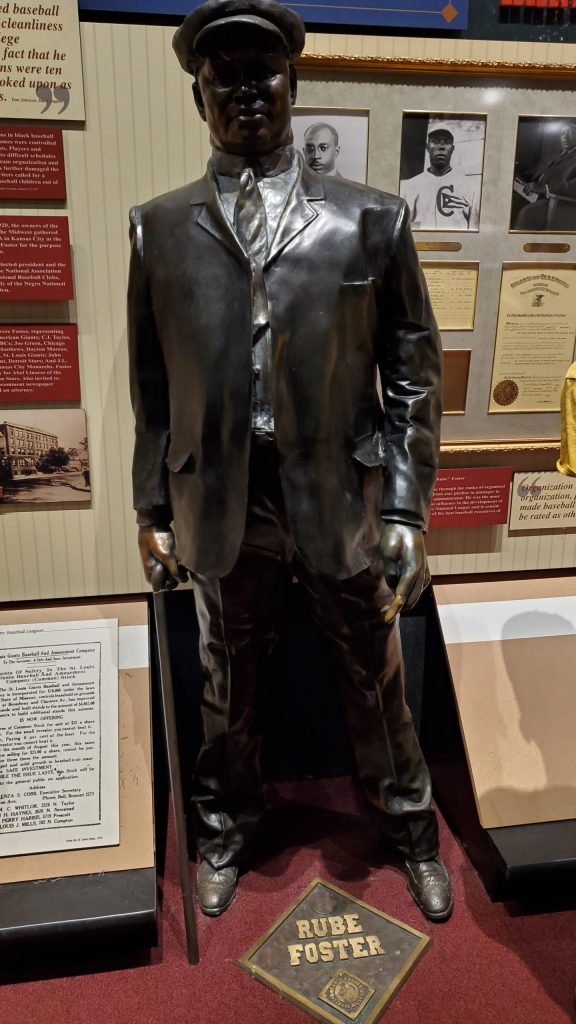
Up Next: Busch Stadium and the St. Louis Cardinals
After our morning visit to the Negro Leagues Museum, we returned to the campground to collect our Airstream and head east to St. Louis. Read our next post for an update on Home Runs for Housing and the St. Louis Cardinals!
